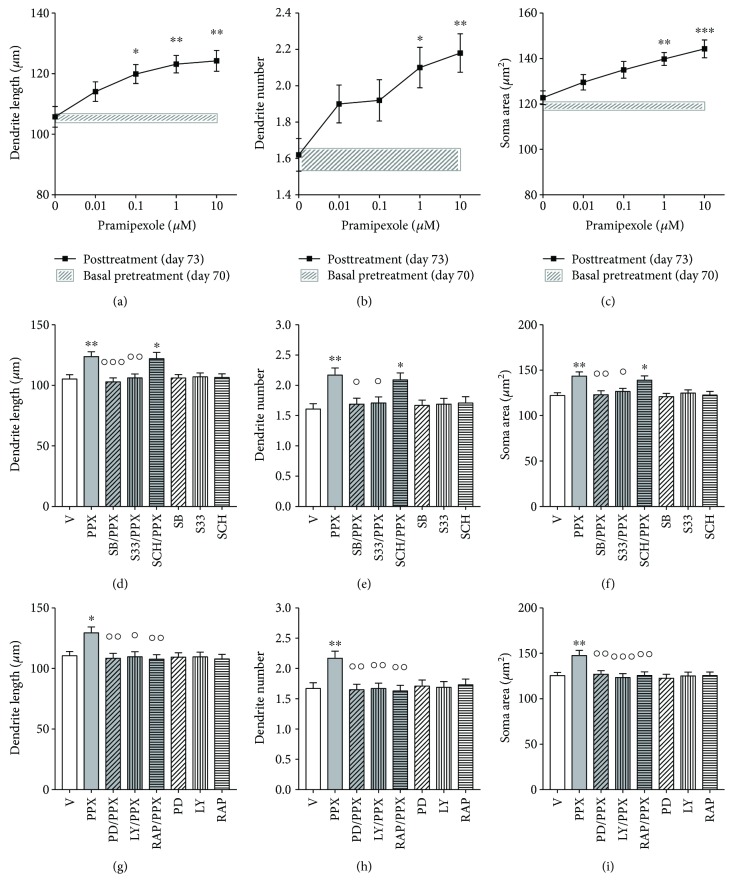Figure 5.
Structural plasticity induced by pramipexole in human iPSC-derived DA neurons is prevented by D3R antagonists and by MEK-ERK and PI3K-mTOR inhibitors. (a–c) Concentration-response curves of pramipexole effects on (a) maximal length of dendrites, (b) number of primary dendrites, and (c) soma area of human F3 DA neurons. Shaded areas (a–c), light grey, show no significant changes in structural plasticity between basal measurements and measurements after 72 hrs when cultures were exposed to vehicle. Data are expressed as mean ± SEM (∗∗∗ p < 0.001, ∗∗ p < 0.01, and ∗ p < 0.05 versus vehicle (0); post hoc Bonferroni's test). (d–f) Inhibition of the effects of pramipexole (10 μM) on structural plasticity following pretreatment (20 min) with either SB277011-A (50 nM) or S33084 (10 nM); (d) maximal dendrite length, (e) number of primary dendrites, and (f) soma area after 72 hrs. Pretreatment (20 min) with SCH23390 (1 μM) was ineffective. (g–i) Inhibition of the effects of pramipexole (10 μM) on structural plasticity following pretreatment (20 min) with PD98059 (10 μM), LY294002 (10 μM), or rapamycin (20 nM); (g) maximal dendrite length, (h) number of primary dendrites, and (i) soma area after 72 hrs. No changes of structural plasticity were visualized when antagonists and inhibitors were tested with the vehicle. Data are expressed as mean ± SEM (∗∗∗ p < 0.001, ∗∗ p < 0.01, and ∗ p < 0.05 versus vehicle; °°°p < 0.001, °°p < 0.01, and °p < 0.05 versus pramipexole; post hoc Bonferroni's test). V, vehicle; PPX, pramipexole; SB, SB277011-A; S33, S33084; SCH, SCH23390; PD, PD98059; LY, LY294002; RAP, rapamycin.

